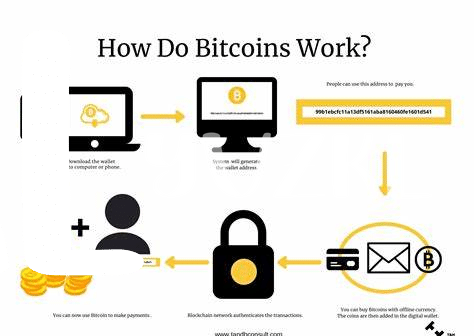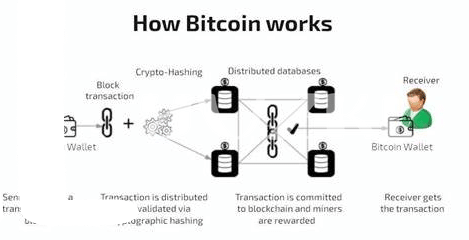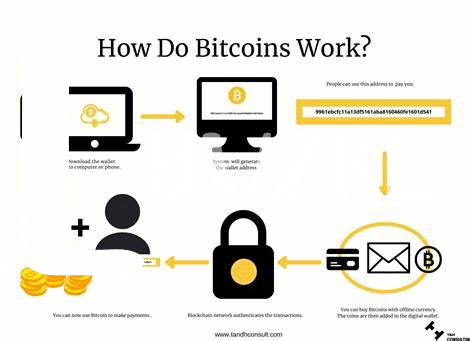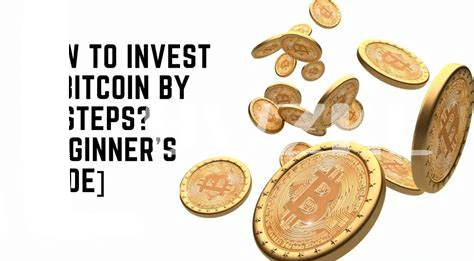🌟 What Is Bitcoin and Its Magic Internet Money?

Imagine a world where digital money floats through the internet, making financial transactions as easy as sending an email. That’s the magic of Bitcoin, the first flavor of what we now call cryptocurrency. Unlike traditional money, which is printed and controlled by governments and banks, Bitcoin is entirely digital and operates on a peer-to-peer network. It all started in 2009 when an unknown person or group under the pseudonym Satoshi Nakamoto created Bitcoin. The idea was simple yet revolutionary: allow people to exchange money without the need for a central authority. This digital form of money can be sent across the globe within minutes, with minimal fees, regardless of the amount. The security and freedom Bitcoin offers have made it incredibly popular. It’s like having your own digital vault that no single entity controls, breaking down financial barriers and making transactions transparent and accessible to anyone with an internet connection.
| Characteristic | Description |
|---|---|
| Digital Nature | Entirely electronic, not controlled by any central authority. |
| Global Accessibility | Can be sent worldwide quickly and with low fees. |
| Security | Transactions are secure and transparent, providing a digital vault for users. |
🔗 Chain of Blocks? Understanding Blockchain Basics
Imagine a magic notebook that everyone in class can write in but no one can erase anything. Every time someone adds a new note, it gets linked to the previous ones with a special puzzle that ensures no one can sneak in and change a note without everyone noticing. This magical notebook is quite similar to what we call the blockchain, which is the backbone of Bitcoin. Each “note” in this case is a record of transactions, and the special puzzles make sure everything stays safe and unchangeable.
Now, to see how all of this comes to life in the world of Bitcoin, picture a digital piggy bank that’s not just for one person, but for everyone using Bitcoin. Every time someone puts money in or takes money out, a new note is added to our magic notebook. But here’s the kicker: because of the special puzzles, once something is written in our notebook, it’s there forever in the exact order it happened. This makes sure that no one can try to be sneaky and spend their digital money twice. It’s a super smart way to keep everything fair and secure, without needing a big, powerful company to watch over everything. To dive deeper into how technology evolves in the digital currency world, including comparisons between Bitcoin and Ethereum’s potential, you can check more at https://wikicrypto.news/future-tech-advancements-ethereums-potential-vs-bitcoins-store-of-value.
🛠 How Bitcoin Uses the Blockchain: a Simple View

Picture Bitcoin as a giant, digital ledger where every transaction is recorded, down to the last cent. This ledger isn’t stored in one place but is spread across thousands of computers around the world. Each transaction is like adding a new line to this ledger. But how do we make sure no one cheats or edits past transactions? Enter Blockchain. It breaks down this ledger into blocks, with each block containing a bunch of transactions. Once a block is full, it’s sealed off and linked to the previous block, creating a chain. This chain is extremely secure because to change even one transaction, you’d have to change every single block after it, an almost impossible task with so many eyes watching.
Now, why is this cool for Bitcoin users? Well, it means anyone can check the transactions, making everything transparent. But you can’t tell who made the transactions, ensuring privacy. It’s like having a public record that’s both open and secret at the same time. This blend of transparency and privacy is what makes using Bitcoin different from say, online banking or using credit cards, where institutions keep your records. Plus, it’s not just about sending and receiving money; this tech allows for smarter transactions that can automatically happen based on certain conditions, thanks to something called smart contracts. In other words, Bitcoin isn’t just digital cash; it’s the door to a whole new way of doing things digitally.
🔍 Beyond Bitcoins: What Else Is Blockchain Good For?

Imagine a world where you can safely keep your personal records, from your house’s deed to your medical history, without worrying about them getting lost or tampered with. That’s one of the promises blockchain technology is bringing to the table. Beyond the realm of digital currency, this technology is revolutionizing fields you wouldn’t expect. Think about voting in elections. What if you could do it from your phone, securely and transparently, with results that are almost impossible to dispute? Or imagine artists selling their artwork directly to fans without a middleman, ensuring they get the full value of their work. These are not distant dreams. Projects and applications in these areas are being developed right now, leveraging the power of blockchain to ensure security, transparency, and trust.
But to really grasp the potential of blockchain, we need to look at current examples. Healthcare systems around the world are considering blockchain to securely manage patient records, ensuring they are easy to share among professionals yet secured against unauthorized access. Supply chains, too, are being reimagined with blockchain, allowing consumers to trace the journey of their purchases from manufacturer to shelf, and ensuring that ethical standards are met along the way. For those curious about the innovative investment strategies that are emerging around blockchain, a deeper dive into how blockchain is being utilized beyond mere currency might prove enlightening. A great place to start is by exploring when was bitcoin created investment strategies, a resource that sheds light on Ethereum’s capabilities beyond being digital gold and hints at the transformative potential of blockchain technology across various sectors.
🌐 Blockchain Misconceptions: Clearing the Digital Fog
Sometimes people get caught up in the digital whirlwind and think blockchain is a magical solution for everything, from curing diseases to fixing global financial systems overnight. But, not all that glitters in the digital world is gold. Blockchain is super cool, yes, because it allows data to be stored in a way that makes it really hard for sneaky folks to mess with. Still, it’s not a one-size-fits-all fixer-upper for every problem out there. It’s kind of like realizing that even though your new, high-tech hammer is awesome for nails, it might not be the best choice for a screw.
Let’s shine a light on some common mix-ups. People sometimes think that blockchain is just for the tech-savvy or that it’s as mysterious as a secret society’s handshake. Not true! Blockchain is essentially a team project where information is shared and checked by everyone, but nobody can cheat because the whole team is watching. This teamwork makes the dream work kind of thing is what makes blockchain special, but it doesn’t mean it’s the secret key to every lock.
| Misconception | Reality |
|---|---|
| Blockchain solves everything | Useful, but not a cure-all |
| Only for the tech elites | Accessible to anyone willing to learn |
| Super complicated tech | Complex, yet understandable basics |
💡 Future Visions: How Blockchain Could Change Our World

Imagine a world where every transaction, agreement, or vote is securely recorded, not just in one place, but across a network of computers around the globe. This isn’t a far-off fantasy but a potential reality with blockchain technology. Think of it as a digital ledger that’s not just for Bitcoin but for nearly everything else you can imagine. From tracking the origin of products to securing personal identities online, blockchain promises a future where data is transparent, yet secure. It’s like having a notary in your pocket, confirming every important exchange or agreement in your life, digitally and indisputably.
Now, consider how blockchain could redefine industries far beyond the realm of digital currencies. Imagine casting your vote from the comfort of your home, with absolute assurance it counts and is tamper-proof. Or envision a world where artists get paid directly for their music and art, without intermediaries eating into their earnings. Blockchain’s potential stretches into healthcare, where patient records could be both universally accessible to authorized practitioners and utterly secure from unauthorized access. To understand how Bitcoin’s underlying technology compares to traditional assets or even other cryptocurrencies, one might explore the nuances and drivers behind their valuations. For insights into these comparisons, how does bitcoin compare to gold versus ethereum provides a deeper understanding. This technology isn’t just about creating unforgeable money; it’s about laying the groundwork for a future where transparency, security, and efficiency are not just ideals but everyday realities.
